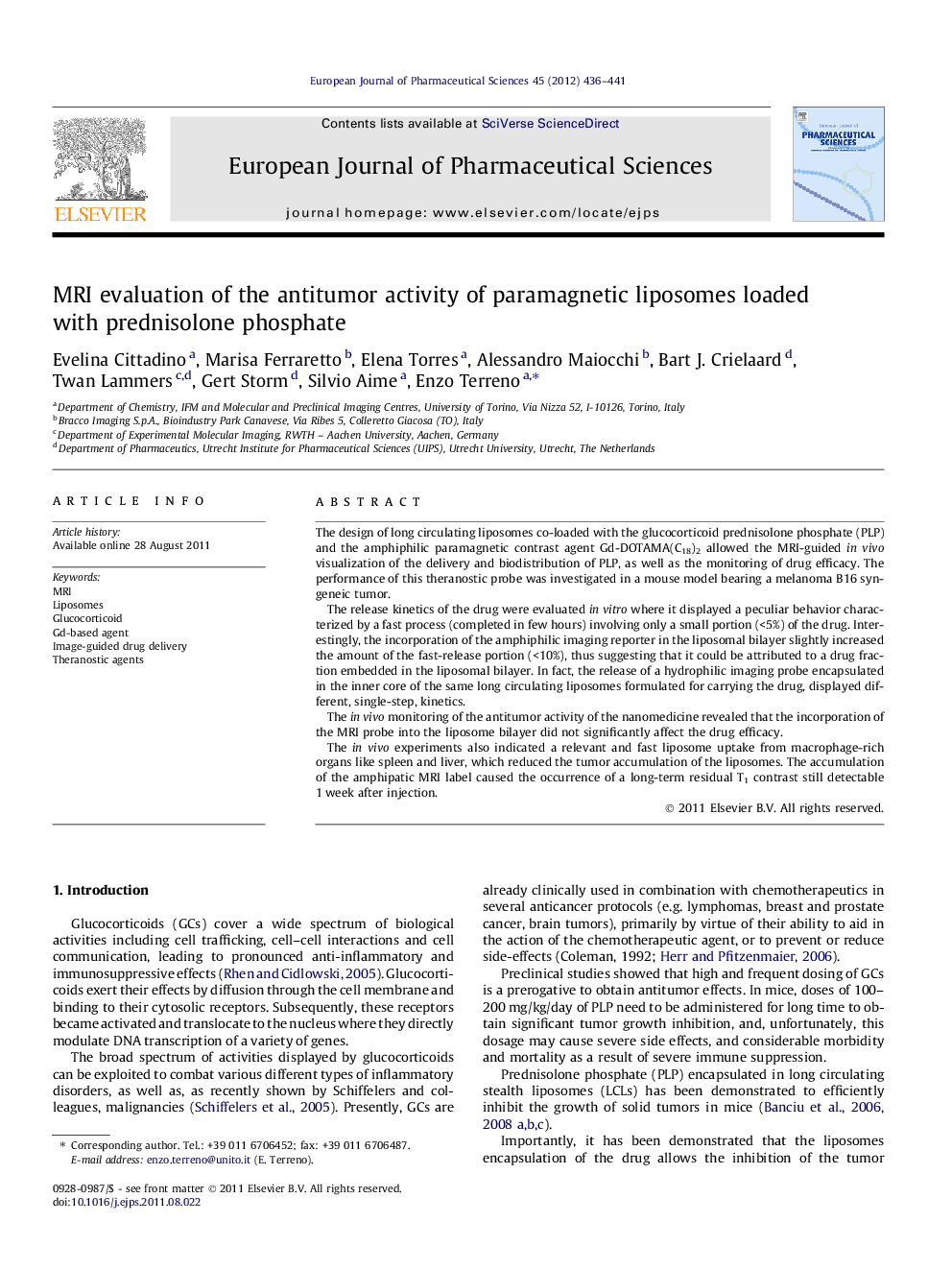| Article ID | Journal | Published Year | Pages | File Type |
|---|---|---|---|---|
| 2481451 | European Journal of Pharmaceutical Sciences | 2012 | 6 Pages |
The design of long circulating liposomes co-loaded with the glucocorticoid prednisolone phosphate (PLP) and the amphiphilic paramagnetic contrast agent Gd-DOTAMA(C18)2 allowed the MRI-guided in vivo visualization of the delivery and biodistribution of PLP, as well as the monitoring of drug efficacy. The performance of this theranostic probe was investigated in a mouse model bearing a melanoma B16 syngeneic tumor.The release kinetics of the drug were evaluated in vitro where it displayed a peculiar behavior characterized by a fast process (completed in few hours) involving only a small portion (<5%) of the drug. Interestingly, the incorporation of the amphiphilic imaging reporter in the liposomal bilayer slightly increased the amount of the fast-release portion (<10%), thus suggesting that it could be attributed to a drug fraction embedded in the liposomal bilayer. In fact, the release of a hydrophilic imaging probe encapsulated in the inner core of the same long circulating liposomes formulated for carrying the drug, displayed different, single-step, kinetics.The in vivo monitoring of the antitumor activity of the nanomedicine revealed that the incorporation of the MRI probe into the liposome bilayer did not significantly affect the drug efficacy.The in vivo experiments also indicated a relevant and fast liposome uptake from macrophage-rich organs like spleen and liver, which reduced the tumor accumulation of the liposomes. The accumulation of the amphipatic MRI label caused the occurrence of a long-term residual T1 contrast still detectable 1 week after injection.
